Related Research Articles

Computer engineering is a branch of electrical engineering that integrates several fields of computer science and electronic engineering required to develop computer hardware and software. Computer engineers usually have training in electronic engineering, software design, and hardware-software integration instead of only software engineering or electronic engineering. Computer engineers are involved in many hardware and software aspects of computing, from the design of individual microcontrollers, microprocessors, personal computers, and supercomputers, to circuit design. This field of engineering not only focuses on how computer systems themselves work but also how they integrate into the larger picture. Robots are one of the applications of computer engineering.
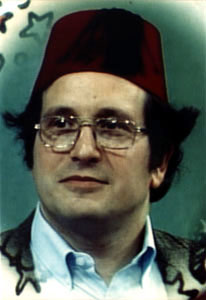
Gerald Jay Sussman is the Panasonic Professor of Electrical Engineering at the Massachusetts Institute of Technology (MIT). He received his S.B. and Ph.D. degrees in mathematics from MIT in 1968 and 1973 respectively. He has been involved in artificial intelligence (AI) research at MIT since 1964. His research has centered on understanding the problem-solving strategies used by scientists and engineers, with the goals of automating parts of the process and formalizing it to provide more effective methods of science and engineering education. Sussman has also worked in computer languages, in computer architecture and in Very Large Scale Integration (VLSI) design.

Lego Mindstorms is a hardware and software structure which develops programmable robots based on Lego building blocks. Each version includes computer Lego bricks, a set of modular sensors and motors, and Lego parts from the Technic line to create the mechanical systems. The system is controlled by the Lego bricks.

William Daniel "Danny" Hillis is an American inventor, entrepreneur, and computer scientist, who pioneered parallel computers and their use in artificial intelligence. He founded Thinking Machines Corporation, a parallel supercomputer manufacturer, and subsequently was Vice President of Research and Disney Fellow at Walt Disney Imagineering.

The MIT Media Lab is a research laboratory at the Massachusetts Institute of Technology, growing out of MIT's Architecture Machine Group in the School of Architecture. Its research does not restrict to fixed academic disciplines, but draws from technology, media, science, art, and design. As of 2014, Media Lab's research groups include neurobiology, biologically inspired fabrication, socially engaging robots, emotive computing, bionics, and hyperinstruments.
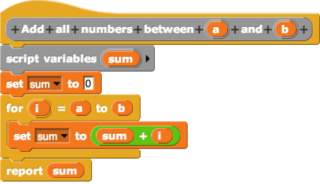
In computing, a visual programming language is any programming language that lets users create programs by manipulating program elements graphically rather than by specifying them textually. A VPL allows programming with visual expressions, spatial arrangements of text and graphic symbols, used either as elements of syntax or secondary notation. For example, many VPLs are based on the idea of "boxes and arrows", where boxes or other screen objects are treated as entities, connected by arrows, lines or arcs which represent relations.
Micro Instrumentation and Telemetry Systems (MITS) was an American electronics company founded in Albuquerque, New Mexico that began manufacturing electronic calculators in 1971 and personal computers in 1975.

Mitchel Resnick is Lego Papert Professor of Learning Research, Director of the Okawa Center, and Director of the Lifelong Kindergarten group at the Massachusetts Institute of Technology (MIT) Media Lab. As of 2019, Resnick serves as head of the Media Arts and Sciences academic program, which program grants master's degrees and Ph.D.s at the MIT Media Lab.

Idit R. Harel is an Israeli-American entrepreneur and CEO of Globaloria. She is a learning sciences researcher and pioneer of Constructionist learning-based EdTech interventions.
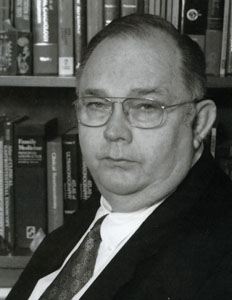
Henry EdwardRoberts was an American engineer, entrepreneur and medical doctor who invented the first commercially successful personal computer in 1974. He is most often known as "the father of the personal computer." He founded Micro Instrumentation and Telemetry Systems (MITS) in 1970 to sell electronics kits to model rocketry hobbyists, but the first successful product was an electronic calculator kit that was featured on the cover of the November 1971 issue of Popular Electronics. The calculators were very successful and sales topped one million dollars in 1973. A brutal calculator price war left the company deeply in debt by 1974. Roberts then developed the Altair 8800 personal computer that used the new Intel 8080 microprocessor. This was featured on the cover of the January 1975 issue of Popular Electronics, and hobbyists flooded MITS with orders for this $397 computer kit.

Brenda Laurel is an American interaction designer, video game designer, and researcher. She is an advocate for diversity and inclusiveness in video games, a "pioneer in developing virtual reality", a public speaker, and an academic.

John Maeda is Chief Technology Officer of Everbridge. He is an American technologist and designer whose work explores where business, design, and technology merge to make space for the "humanist technologist."
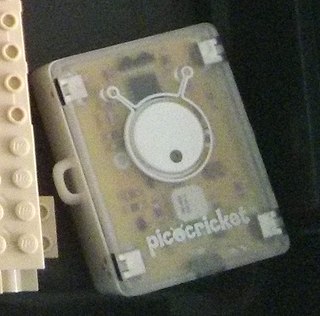
Programmable Crickets, known commercially as PicoCrickets, are robotic toys in the form of programmable bricks. They are used to construct artistic projects.

Margaret Heafield Hamilton is an American computer scientist, systems engineer, and business owner. She was director of the Software Engineering Division of the MIT Instrumentation Laboratory, which developed on-board flight software for NASA's Apollo program. She later founded two software companies—Higher Order Software in 1976 and Hamilton Technologies in 1986, both in Cambridge, Massachusetts.
Brian Silverman is a Canadian computer scientist, the creator of many programming environments for children, and a researcher in cellular automata.
Janese Swanson is an American inventor and software developer. Swanson co-developed the first of the Carmen Sandiego educational games, and founded the company Girl Tech, which creates products aimed at making technology more interesting for girls. She has developed award-winning curricula, electronic toys, and books that encourage girls to explore technology and inventions. Her toy inventions include the Snoop Stopper Keepsake Box, Me-Mail Message Center, Zap N’ Lock Journal, and Swap-It Locket. Her publications include Tech Girl's Internet Adventures, Tech Girl's Activity Book, and Girlzine: A Magazine for the Global Girl.

Makey Makey: An Invention Kit for Everyone is an invention kit designed to connect everyday objects to computer keys. Using a circuit board, alligator clips, and a USB cable, the toy uses closed loop electrical signals to send the computer either a keyboard stroke or mouse click signal. This function allows the Makey Makey to work with any computer program or webpage that accepts keyboard or mouse click.
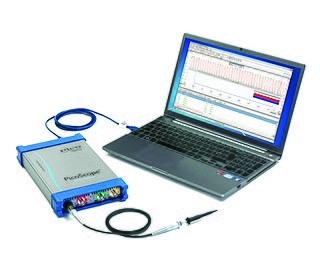
Pico Technology is a British manufacturer of high-precision PC-based oscilloscopes and automotive diagnostics equipment, founded in 1991. Their product range includes the PicoScope line of PC-based oscilloscopes, data loggers, automotive equipment, and most recently, handheld USB-based oscilloscopes. Since their inception in 1991, Pico Tech has been researching and developing PC-based oscilloscopes, when the market standard was analogue storage oscilloscopes. Pico Technology is one of two European scope manufacturers, and competes in the low to middle end of the instrumentation market.

Makeblock is a private Chinese technology company headquartered in Shenzhen, China. It develops Arduino-based hardware, robotics hardware, and Scratch-based software for the purpose of providing educational tools for learning. This includes programming, engineering and mathematics through the use of robotics.
Marina Umaschi Bers is a professor at Tufts University known for her work on computational thinking, technology, and tools for children to learn computer programming. She has brought robotics into the classroom through her work on ScratchJr and Blocks to Robots, which includes robotics kits designed for young children.
References
- ↑ "Scratch - Credits". scratch.mit.edu.
- 1 2 "PicoCricket - Invention Kit That Integrates Art and Technology." PicoCricket - Invention Kit That Integrates Art and Technology. N.p., n.d. Web. 25 July 2013.
- ↑ Roush, Wade (14 September 2007). "With PicoCricket, MIT Spinoff is Out to Prove Computer Toys Aren't Just for Boys | Xconomy". Xconomy. Retrieved 29 July 2017.
- ↑ "Invention kit that integrates art and technology". PicoCricket. Retrieved 29 July 2017.